At Access Rehabilitation Equipment, we commit to providing you and your loved ones solutions for life! Fitting your lifestyle, each aid and equipment is tailored to the unique challenges you are facing, so work with us to find the independence and mobility you want!
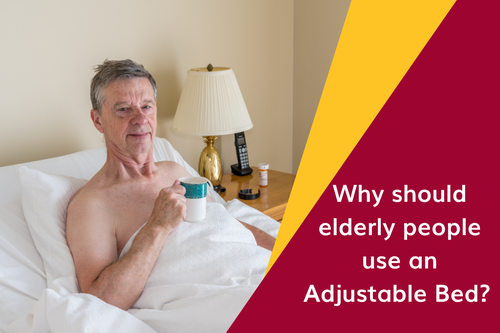
As an elderly person, an adjustable bed can improve your sleep in many ways. Having restful sleep is crucial regardless of age, but it becomes especially vital as we grow older. As we age, our sleep patterns, health, and mobility can undergo changes. Thus, investing in an adjustable bed can be fundamental in avoiding discomfort and ensuring a good sleep quality during older age.
In recent years, the innovative concept of adjustable beds or elevating beds has emerged as a solution for elderly people seeking enhanced comfort and support during their sleeping hours. Once reserved for hospitals and luxury hotels, adjustable beds are now becoming more accessible for home use.
From promoting better sleep quality to enhancing mobility and independence, these ingenious sleep solutions have the potential to significantly improve the lives of our elderly community. With various features and accessories, achieving the ideal sleeping position becomes easily attainable. Before you consider buying an adjustable bed, here are some recommendations and things to consider.

WHO CAN USE AN ADJUSTABLE BED?
While adjustable beds can be particularly beneficial for the elderly, they are suitable for a wide range of individuals with various needs and preferences.
Common needs for adjustable beds include:
-
Elderly individuals who experience physical discomforts and conditions like arthritis, back pain, and respiratory issues – Adjustable beds offer personalised support, promoting better sleep posture and alleviating pressure on sensitive areas, making them ideal for the seniors seeking enhanced comfort during sleep.
-
Medical Conditions including:
- Acid Reflux: Elevating the upper body can help prevent stomach acid from flowing back into the esophagus, reducing symptoms of acid reflux and heartburn.
- Sleep Apnea: Adjusting the bed to an inclined position can open up the airways and improve breathing, making it easier for individuals with sleep apnea to breathe during sleep.
- Circulation problems: Elevating the legs can improve blood flow and circulation, benefiting individuals with circulation issues like varicose veins.
- Chronic Back Pain: Adjustable beds can help individuals find a more comfortable sleeping position that alleviates pressure on the spine, reducing back pain.
- Arthritis: Individuals with arthritis can benefit from adjusting their beds to support specific areas of discomfort. This can relieve joint pressure and provide relief.
- Chronic Snoring: If a person regularly makes loud or harsh noises while breathing during sleep, it can increase the risk of health problems. By elevating the head, adjustable beds can reduce snoring caused by the obstruction of the airways during sleep.
-
Limited Mobility - For individuals with limited mobility, electric beds provide convenience and ease of use. With a simple remote control, they can adjust the bed’s position to find the perfect sleeping or sitting spot, all on their own.
-
Couples or Partners who sleep together - Adjustable beds often come with dual or split controls, enabling each partner to customise their side of the bed according to their individual sleep preferences. This feature is especially beneficial when one partner may suffer from medical conditions such as Multiple Sclerosis or Alzheimer’s.
-
Additional Comfort - Those individuals seeking enhanced comfort even without specific medical conditions can also benefit from the comfort and flexibility that elevating beds can offer.
WHAT IS THE BEST ADJUSTABLE BED FOR SENIORS?
When looking for an adjustable bed, there are many options available in today’s market. With our expertise and many years’ experience in the industry, we have trialled many different bed options across a wide range of clients with a huge range of disabilities and needs.
BEST ALL ROUNDER
The Aspire ComfiMotion Care Bed stands out as the ultimate adjustable bed for seniors. This care bed is suitable for home use as it blends seamlessly, combining therapeutic benefits with home aesthetics while prioritising user safety and comfort.
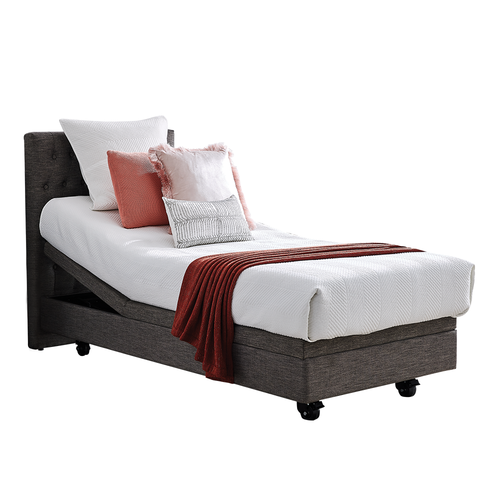
Its outstanding features make it a top choice for elderly users:
- Night Light: The bed features an underbed glowing light which ensures safety when getting in and out of bed during the night,
- Safety Handset: The large buttons on the handset make it quick and easy to adjust the bed
- Box-on-Box Design: The design facilitates easy entry and exit from the bed, allowing for true flush positioning when two beds are placed side by side in companion or dual adjustable configurations.
- No noise : The bed is equipped with high-quality motors that are smooth and quiet when adjusting the bed providing a peaceful sleeping environment for seniors.
- Size Options: The Aspire ComfiMotion Care Bed is available in both long single and king single sizes, accommodating various room layouts and individual preferences.
- Customisable Height: The bed's total height can be adjusted based on mattress choice, allowing seniors to tailor the bed's height to their desired level of accessibility and comfort.
RUNNER UP
The IC333 Homecare Bed is a fantastic electric bed that offers all of the health benefits and comfort of a hospital bed without looking like a hospital bed! It’s an ideal hi-lo bed for seniors to use at home and offers a unique tilt function for infinite positioning.
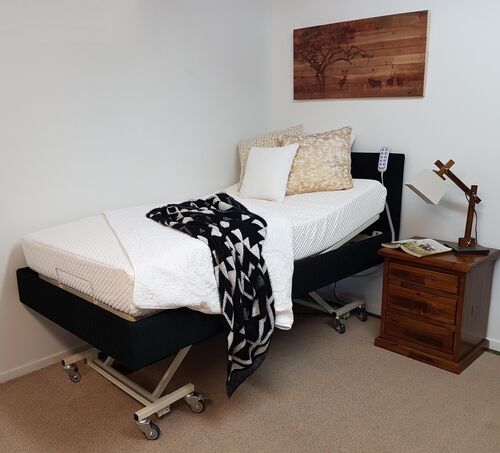
HONORABLE MENTION
The Endless bed is also a very popular choice for many seniors needing an electric adjustable bed. From care of frail elderly or dementia patients, to acute and bariatric settings, the Endless Floorline Bed has you covered.
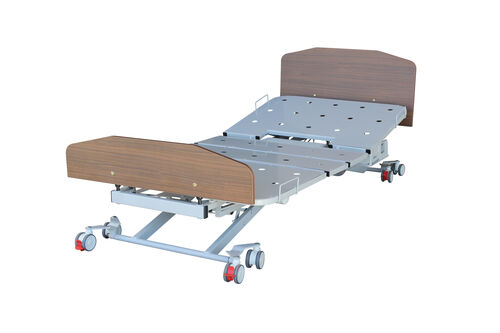
WHAT ARE THE BENEFITS OF AN ADJUSTABLE BED?
The popularity of adjustable beds is on the rise, and rightfully so, as they offer the opportunity to customise the support of your bed to create an ideal sleeping experience. If you are contemplating the idea of getting an adjustable bed but aren’t 100% certain, let these benefits help you decide!
Relief and Comfort
One of the problems faced by elderly individuals is chronic pains, making it hard to adjust to their sleeping and waking positions. If you are one of them, adjustable beds can help elevate your head, hands, or feet into a more comforting position to lessen the pain. It will also relieve pressure on your lower back. This way, you will not need extra pillows to get the extra elevation you need for your comfortable sleeping spot.
Aid in Digestion
An uncomfortable sleeping position can trigger acid reflux as the foods you consume cannot move well in your esophagus, causing the stomach acid to pool. If you have been diagnosed with acid problems, the elevating head of an adjustable bed can reduce symptoms of acid reflux and heartburn.This inclined position aids in keeping the upper body elevated, allowing gravity to work in favor with keeping stomach contents down.
Promotes Easier Breathing
A significant advantage of using an adjustable bed is the ability to elevate the upper part of your body to a comfortable position that facilitates unrestricted breathing. Even individuals without breathing disorders can experience the benefits of adjustable beds, as they can also help with head colds, allergies, and sinus congestion.
Enhanced Better Circulation
Poor blood circulation can contribute to heart issues, limb numbness, and brain fog. Adjustable beds offer a solution by allowing you to customise the bed angle to enhance circulation according to your specific requirements. This promotes better rest and supports your entire circulatory system, which is always beneficial. Raising the lower part of your adjustable bed can aid blood flow back to the heart and improve circulation.
Partner Compatibility
If you share your bed with a partner, an adjustable bed allows both of you to find individual comfort levels without disturbing each other’s sleep, leading to better harmony during the night.
An adjustable twin bed for elderly or the Aspire Comfimotion Fixed Companion Bed gives you and your partner each a mattress and adjustable bed base that you can adjust independently without disturbing your partner.
Independence in Daily Activities
Beyond sleep, an adjustable bed is versatile for various activities like reading, watching TV, or working on a laptop. Having control over the bed’s positioning allows individuals to engage in these daily tasks independently.
HOW CAN AN ADJUSTABLE BED HELP YOU SLEEP BETTER?
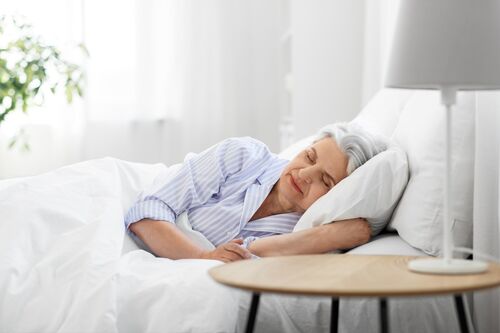
Not getting enough sleep regularly can make it hard to concentrate, cause memory problems, and make you less alert. It can also lead to various health issues. Experts recommend that people under 65 should aim for about 9 hours of sleep each night, and those over 65 should still get around 7 to 8 hours. So, how could an adjustable bed be helpful in this situation?
By offering personalised support, pain relief, and addressing sleep-related issues, an adjustable bed can significantly improve your sleep quality, helping you wake up feeling more refreshed and ready to tackle the day.
ARE ADJUSTABLE BASES FOR OLD PEOPLE?
Adjustable bases are the latest innovations in the bed and mattress industry. It offers different power base features that anyone, especially the elderly, can use to their convenience and advantage. These power motors can adjust to your preferred position, whatever activities you do while resting. It can also resolve your various physical and other health problems since some of these are caused by unsatisfied sleeping experiences.
Some adjustable bases offer other traits you can enjoy especially if you are a senior. For instance, it has memory positions that allow you to preset your favorite position. Some also have portable charging devices, which makes plugging your electronics easier. Meanwhile, massage functions give an extra pamper and relaxation, especially if you suffer from back, neck, and lower back pains.
WHAT ACCESSORIES CAN YOU USE ON AN ADJUSTABLE BED?
Adjustable beds offer versatility and comfort, and there are several accessories that can enhance the overall experience:
Bed Poles
These accessories provide another support, especially if you have a hard time getting out of bed. Bed poles are rails fixed to the side of the bed in a handy position for you to grasp when you need additional support moving, and helps you to maintain independence.
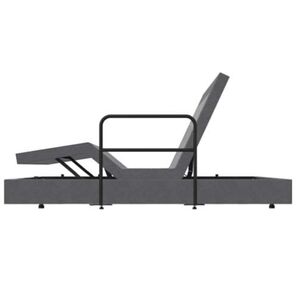
To make sure bed poles are used safely, conduct an assessment for each person.
Overbed Tables
It provides another space to do other activities while enjoying the leisure of rest. Over bed tables are suited to the adjustable beds, making reading and eating more convenient as it is positioned closer to you.
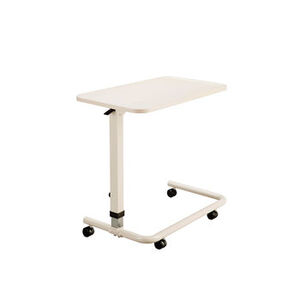
Breeze Pillows
To achieve the best sleeping and resting experience, you can consider partnering your adjustable bed with a breeze pillow. Along with the comfort, it is made from innovative technologies that promise pressure relief, body temperature regulation, and memory foam.
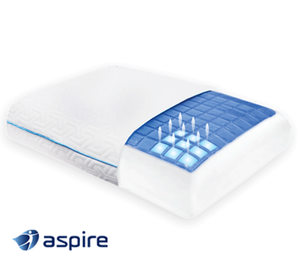
Battery Back Up
Battery Back Up for adjustable beds is a valuable accessory that ensures functionality during power outages or emergencies. When considering an adjustable bed with battery backup, it’s essential to check the capacity and runtime of the backup system to ensure it meets the user’s needs.
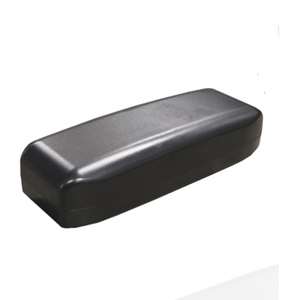
Castors
Castors, also known as caster wheels, are a practical and essential component for adjustable beds. These rotating wheels are typically attached to the bed’s frame or legs, enabling smooth movement and mobility.
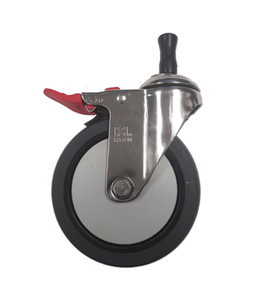
WHAT ARE SOME DISADVANTAGES OF USING AN ELECTRIC ADJUSTABLE BED?
While adjustable beds offer a wide range of benefits, there are also several disadvantages to be aware of before making a purchase decision.
Higher Costs
The cost of electric beds are generally more expensive than traditional beds, which might not fit everyone’s budget. The motorised components, electronics, and added features contribute to the higher price point. You certainly have to plan your budget and make some financial adjustments before purchasing.
Incompatibility with Ordinary Mattresses
Not all mattresses are suitable for use with electric adjustable beds. Ensuring mattress compatibility is crucial to avoid discomfort or potential mattress damage.
Weight and Portability
The combined weight of a conventional bed set, including the mattress, box spring, and frame, typically falls around 200 pounds, with some variation. On the other hand, adjustable beds can weigh up to three times that amount! This significant difference implies that not only will the initial move-in process for an adjustable bed be more challenging, but it may also pose difficulties in repositioning or relocating the bed in the future. (Of course, incorporating heavy-duty casters can partially address the weight-related challenges associated with adjustable beds.)
Complex Controls
Operating an adjustable bed often involves using remote controls or control panels to adjust the bed’s incline or position. Figuring out how to use them might be a bit tricky for some users, and changing the bed’s position might be confusing as you through different settings.
Maintenance and Repair Costs
The mechanical components of adjustable beds may require occasional maintenance or repairs, leading to additional costs. Users should be prepared for potential servicing needs to ensure their investment remains functional over the long term.
FREQUENTLY ASKED QUESTIONS:
Can I use a remote control with my adjustable bed?
All adjustable beds come with remote controls that allow you to adjust the bed’s position, incline, and other features with ease. These user-friendly remote controls are designed for convenience, making it easy to customize the bed’s configuration to achieve heightened comfort and support.
Why are adjustable beds so heavy?
Adjustable beds tend to be heavier than traditional flat beds primarily due to the inclusion of mechanical components and additional features that enable their adjustable functionality. These beds are designed with motors, gears, and other mechanisms that allow users to change the bed's position, incline, and elevation. The presence of these moving parts adds significant weight to the bed's frame and structure.
Do I need a special mattress for my adjustable bed?
To ensure proper functioning without damage, adjustable bed frames require special mattresses that can flex with different positions. Traditional innerspring mattresses are not typically suitable for such frames. Instead, memory foam, latex, and some hybrid mattresses are recommended for optimal performance.
How thick should a mattress be for an adjustable bed?
A general guideline is to choose a mattress that is between 8 to 12 inches thick. Thicker types are harder to adjust to the bed.
Is it better to sleep with your head or your feet elevated?
Sleeping with either your head or feet elevated depends on your own preferences, existing sleeping issues, or medical conditions. In some cases, your medical advisor may recommend an adjustable bed to elevate your head or feet while sleeping.
Conclusion
Investing in an adjustable bed for elderly can be a transformative choice, providing not only a restful sleep but also a sense of independence and control over your sleep environment. As always, it is best to consult with your healthcare provider to determine the most suitable adjustable bed based on your health conditions and requirements.
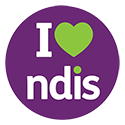

 Providing solutions for life
Providing solutions for life







